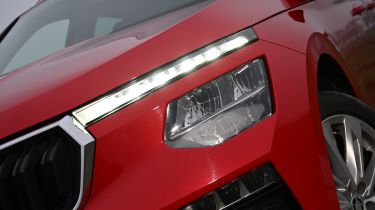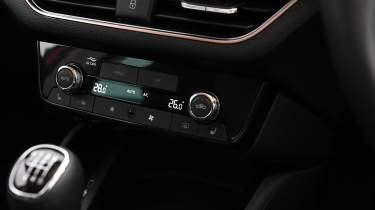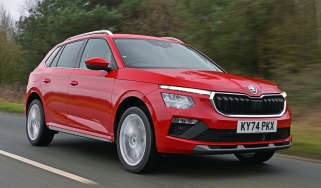Skoda Kamiq review - MPG, running costs & CO2
"The Skoda Kamiq will be cheap to run, with tried-and-tested economical engines"
High fuel prices and increasing concern about the environment have led more people to be conscious of their next car's fuel-efficiency. The Kamiq will appeal to value-conscious buyers, as all its engines are frugal and won’t cost the earth to fill up. Its three petrol engines have been used in many different cars, so the balance between economy and performance is finely struck, while the diesel option has now been discontinued.
While SEAT is thought of as the sporty side of the VW Group and Audi the luxurious arm, Skoda is the group’s value-led brand. Not only do its prices undercut many rivals, but day-to-day running costs are often lower too. Insurance will be reasonable, and extending the warranty is a viable option if you’re planning on keeping the car for a few years because it doesn’t cost too much to extend.
Skoda Kamiq MPG & CO2
Both the 94 and 114bhp versions of the 1.0-litre petrol engine can manage just over 50mpg – thanks to its six-speed gearbox, rather than the base model’s five-speed, the 114bhp version is actually marginally more economical returning up to 52.2mpg compared to the 94bhp version’s 51.8mpg figure. Even the top 1.5-litre petrol with 148bhp can return up to 49.7mpg. While this is with a manual gearbox, choosing the 1.5-litre with an automatic only drops fuel economy slightly. In Monte Carlo trim, the bigger engine also brings CO2 emissions of up to 136g/km, which is likely to put off company-car buyers.
More reviews
In-depth reviews
When we tested the 1.5-litre petrol engine we achieved 43.8mpg over mixed roads, and driving on the motorway at 70mph we saw that climb to up to 52mpg, which is pretty impressive in the real world.
There used to be a diesel engine, a 1.6-litre with 113bhp which was appealing to high-mileage drivers but has now been discontinued. It offered fuel economy of up to 56.5mpg so, as well as being more expensive to buy, it wasn't drastically more efficient than the petrol engines. CO2 emissions for the 1.0-litre TSI range from 122-134g/km, making it the most affordable option for business buyers.
After the first year’s road tax, which is included in the price of the car, all Kamiq models will cost the standard VED (road tax) rate each year.
Insurance groups
Insurance groups for the Skoda Kamiq should be affordable for most drivers, starting from group 11 for the 1.0-litre petrol, group 14 for the popular mid-range 114bhp petrol, and group 19 for the 1.5-litre models.
Warranty
The Kamiq features Skoda’s three-year warranty, which is the industry standard. You’ll be covered for unlimited mileage in the first two years, and in the third year you’ll be covered until you reach 60,000 miles.
That’s in line with many companies like Volkswagen, SEAT and Renault, but it doesn’t look so generous compared to others; Jeep and Fiat offer five-year/75,000-mile warranties, Hyundai offers a five-year, unlimited-mileage warranty, while Kia and SsangYong both provide warranty cover for seven years and 100,000 or 150,000 miles respectively.
Just like the Scala, you’ll be able to extend the Kamiq’s warranty for extra cost. It’s about £500 to extend the cover to five years/100,000 miles, which isn’t too bad if you’re thinking of holding on to the car.
Servicing
The company provides fixed-price servicing for its models, so you’ll know that an interim service will cost around £170 and a major service will set you back roughly £300. Changing the oil and filter costs £100, and you’ll need to put the car through an MOT test once it’s three years old.
To spread the cost, you can buy a service plan that covers the car’s first two scheduled services. This costs around £400 up front, or you can add it to your monthly finance payments for a set fee.











